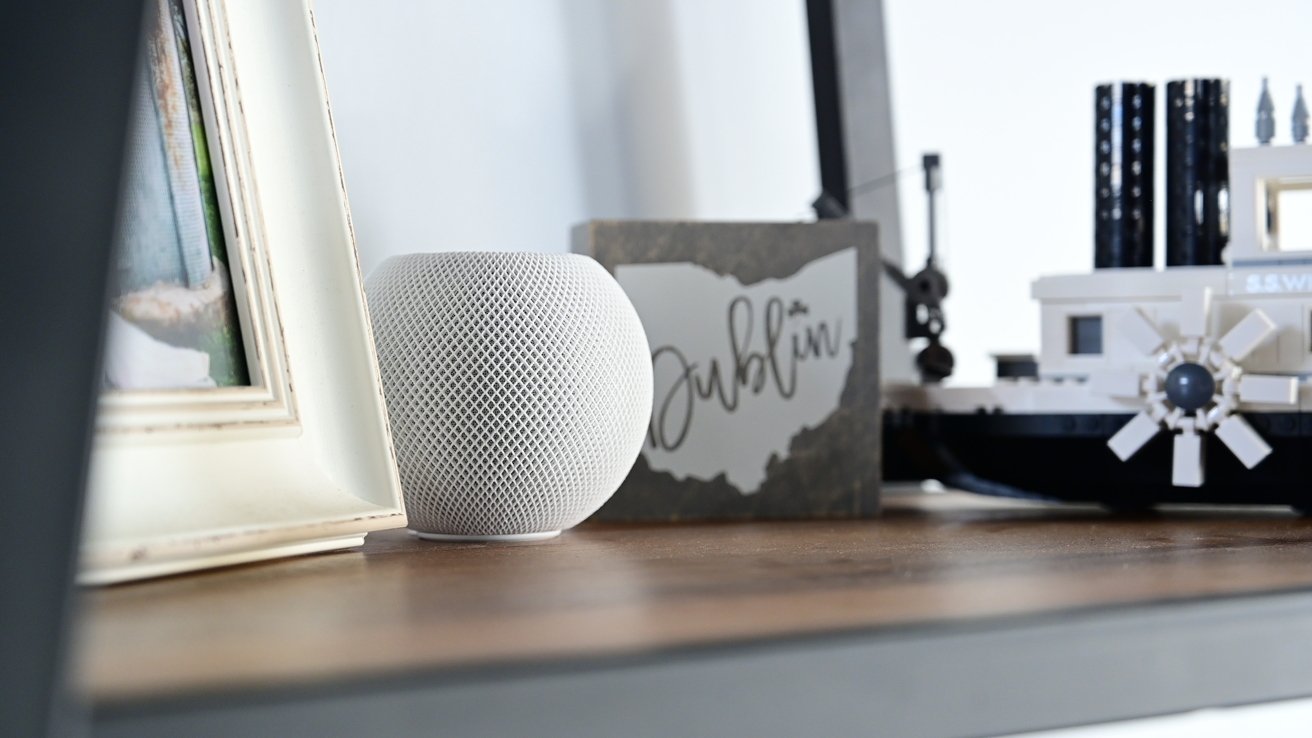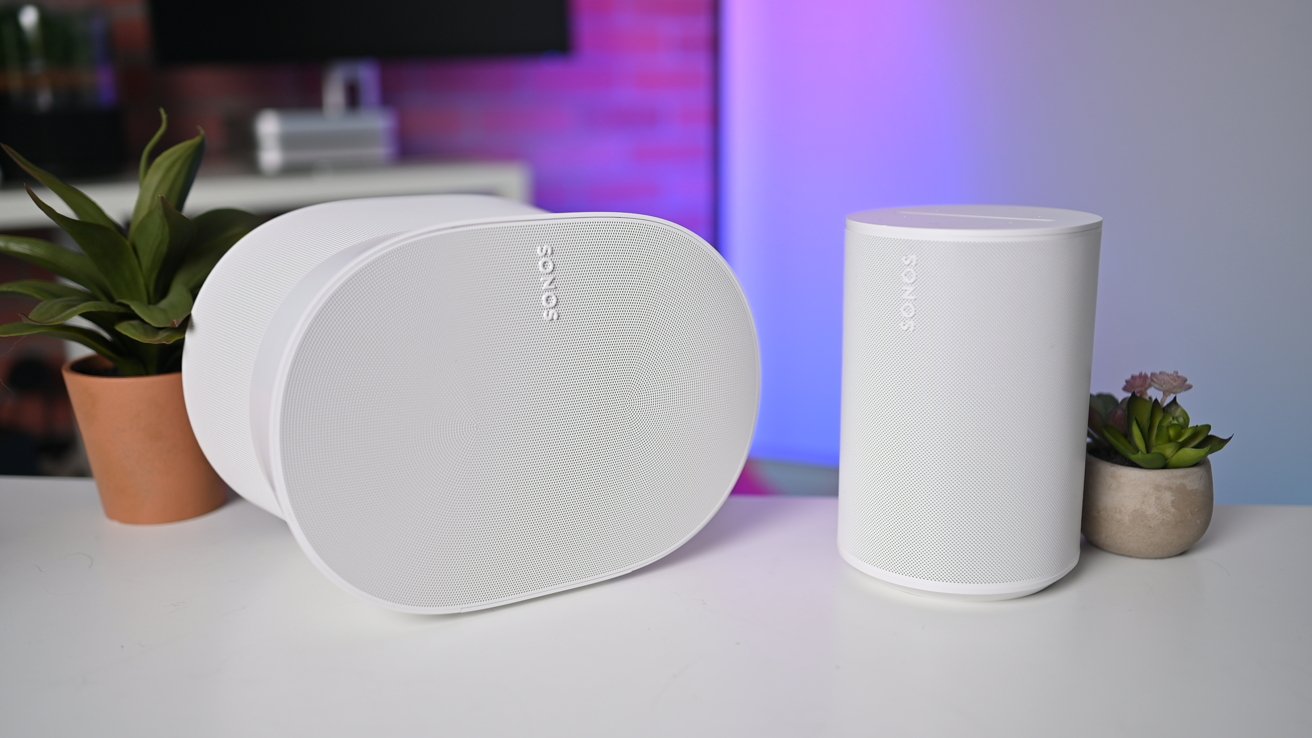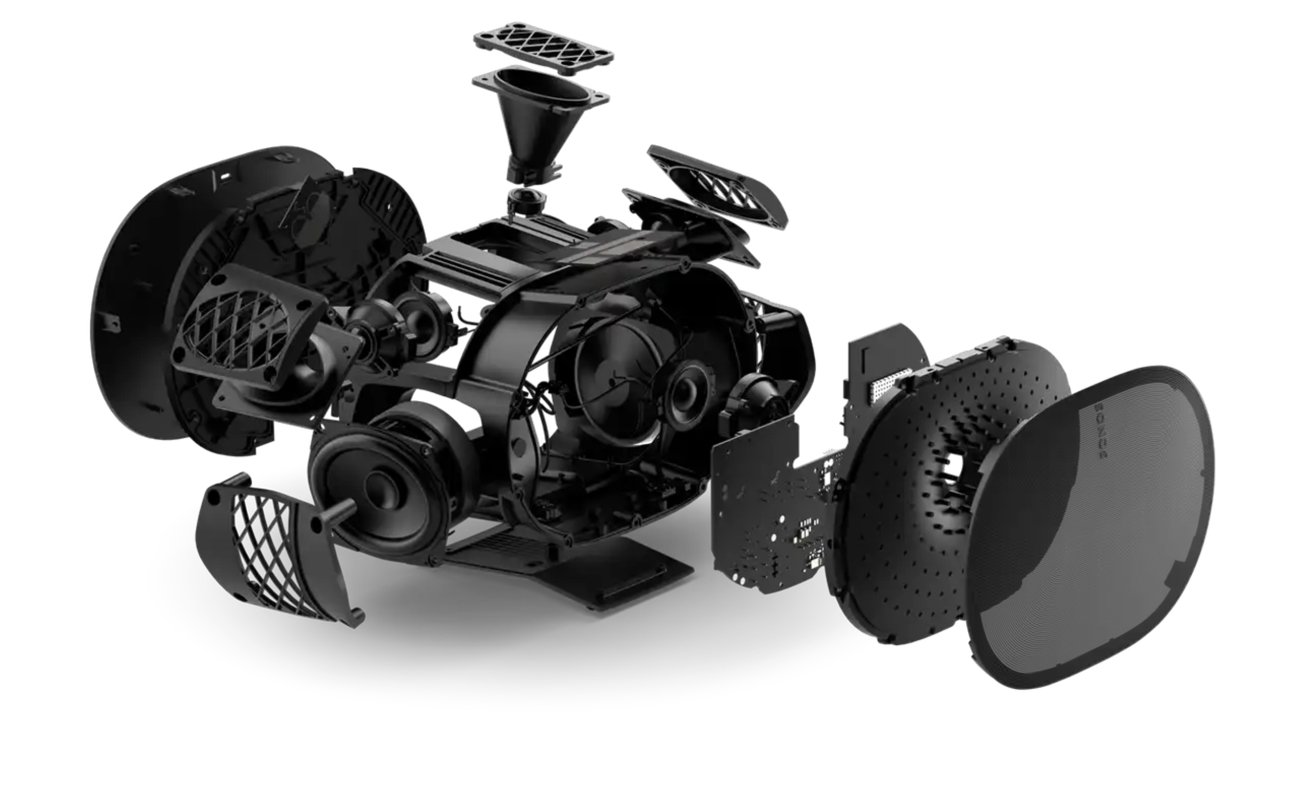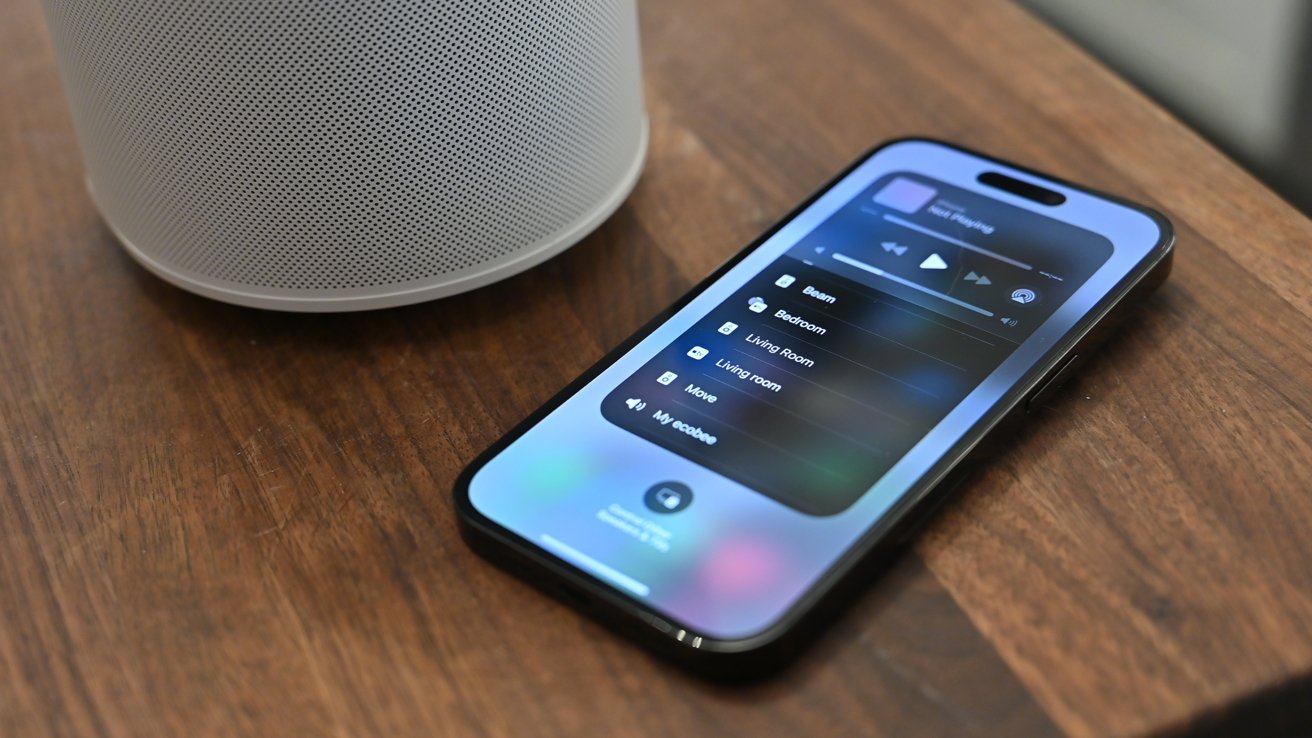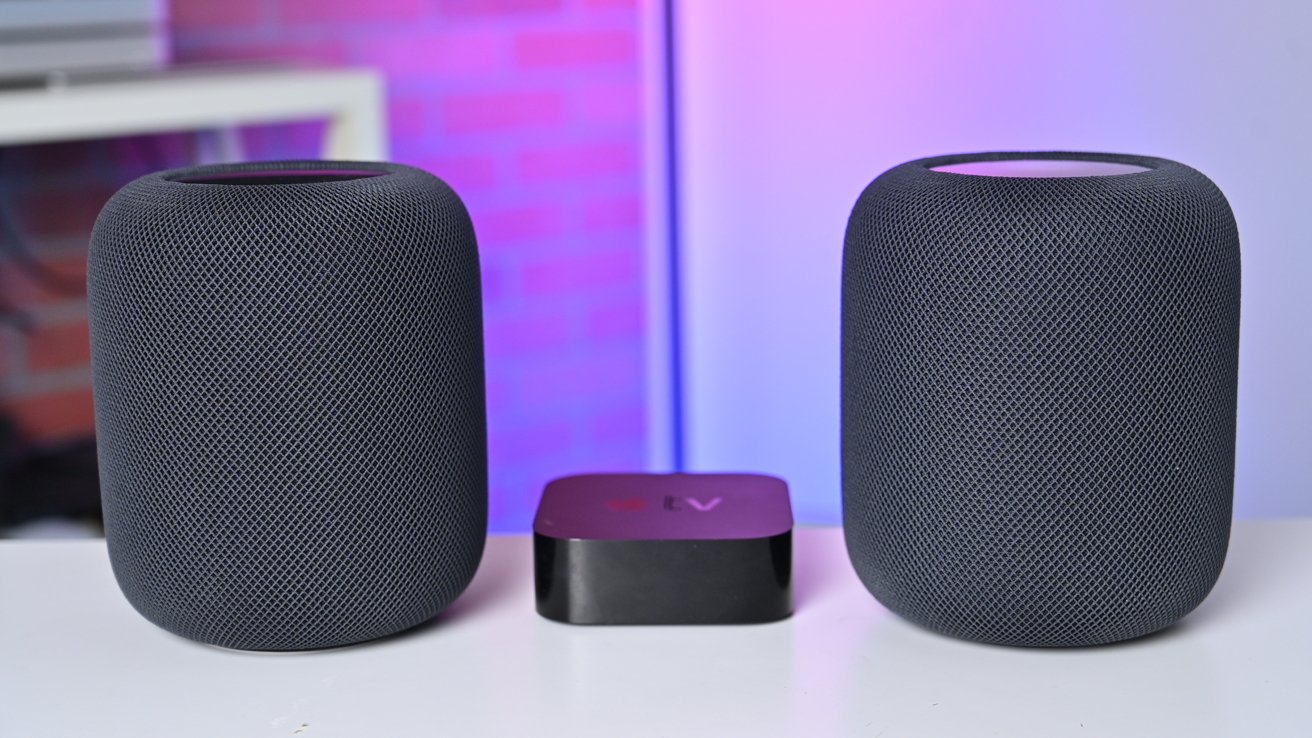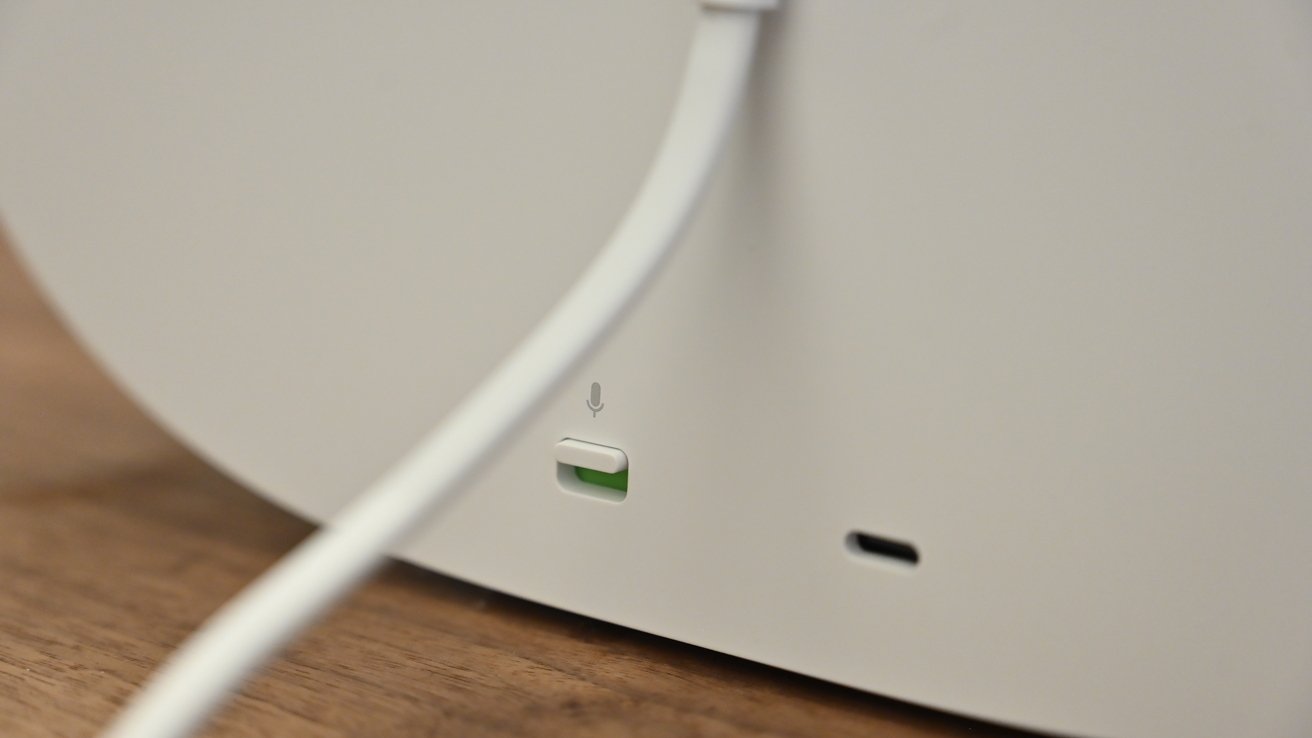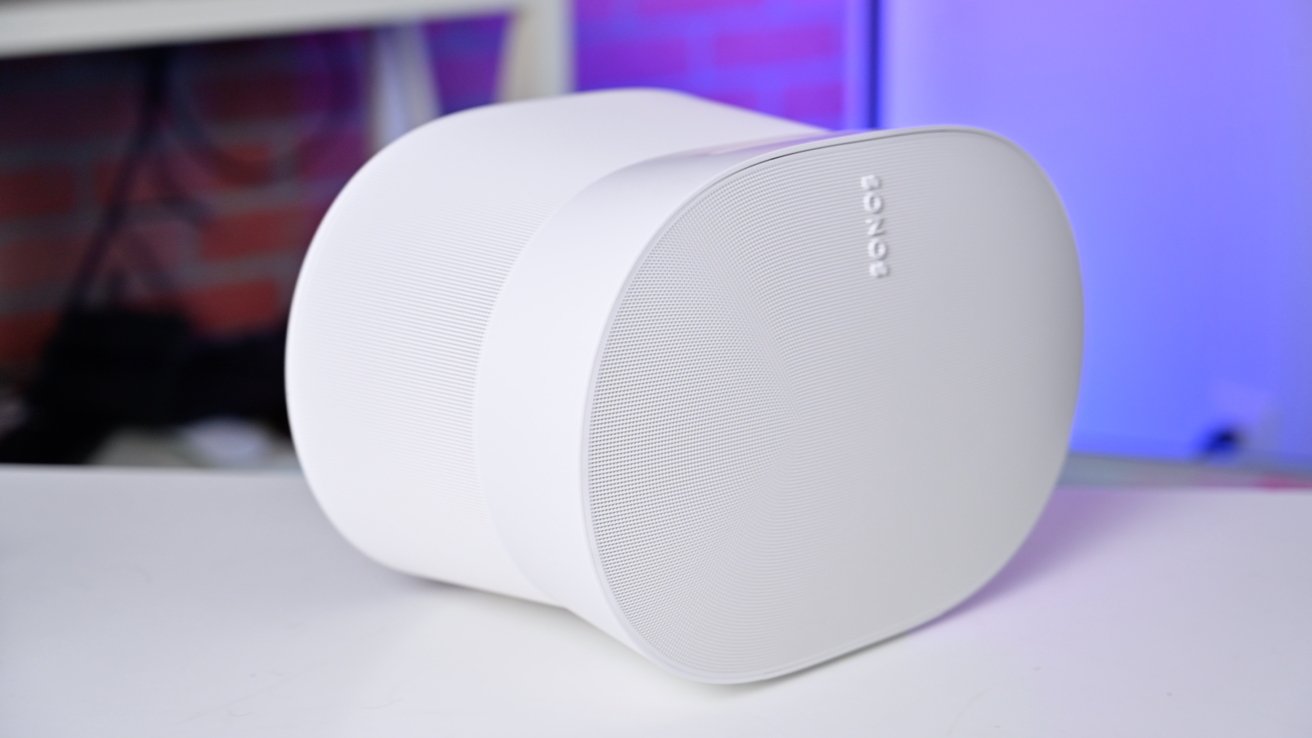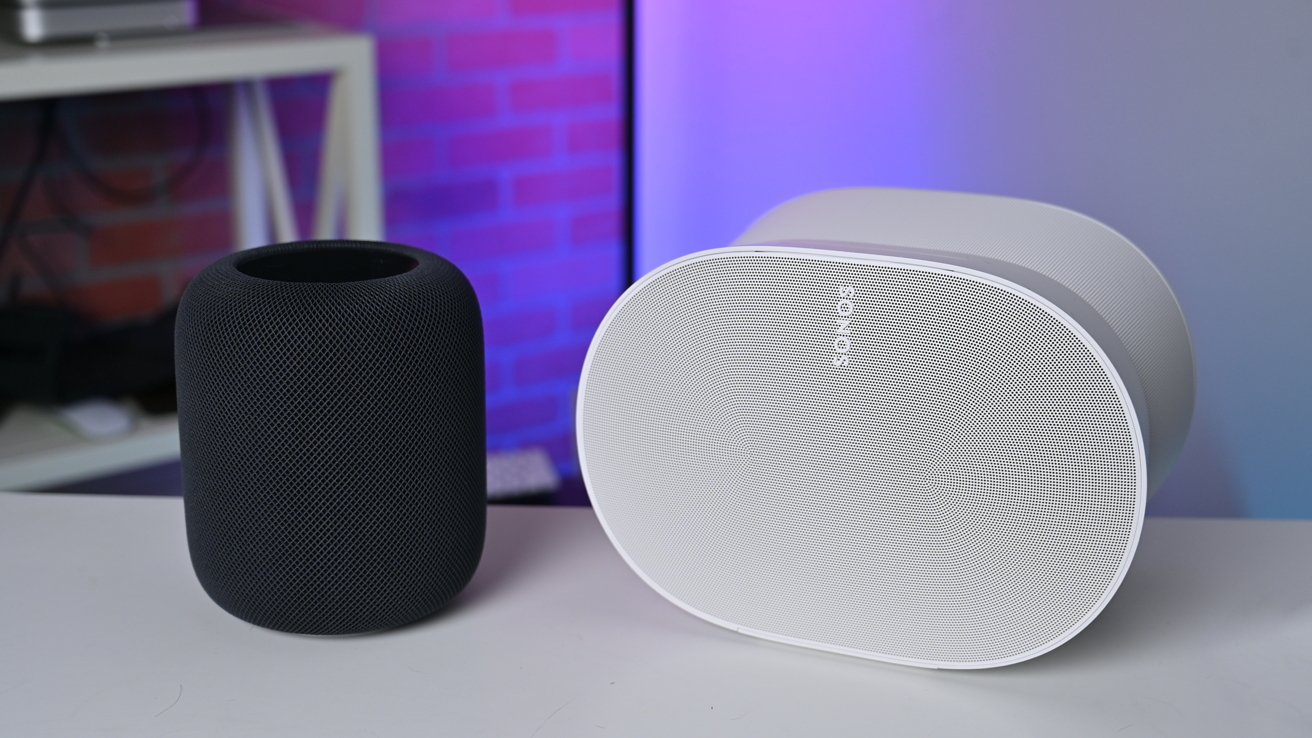
HomePod mini & HomePod vs Sonos Era 100 & 300 -- Compared
The Sonos Era 100 and Era 300 are the audio company’s new smart speakers, which include Dolby Atmos support. Here’s how they compare to Apple’s own HomePod and HomePod mini.
In early March, Sonos introduced what it called the “next generation of smart speakers” with two product launches. The Era 100 was a remastered version of the previously-sold Sonos One, while the Era 300 aimed higher with more speakers and better performance.
As smart speakers available in both big and small form factors, this could be considered analogous to Apple’s HomePod lineup, which too relies on a large HomePod alongside a smaller HomePod mini.
Both product families boast high levels of network connectivity and performance, but at somewhat different price ranges.
Specifications
| Spec | HomePod 2023 | HomePod mini | Sonos Era 300 | Sonos Era 100 |
|---|---|---|---|---|
| Price | $299 | $99 | $449 | $249 |
| Dimensions (inches) | 6.6 x 5.6 | 3.3 x 3.9 | 6.3 x 10.24 x 7.28 | 7.18 x 4.72 x 5.14 |
| Weight (pounds) | 5.16 | 0.76 | 9.85 | 4.44 |
| Speakers | High-excursion woofer 5 horn-loaded tweeters |
Full-range driver and dual passive radiators, Custom acoustic waveguide |
6 class-D digital amplifiers, 4 tweeters, 2 woofers |
3 class-D digital amplifiers, 2 tweeters, 1 woofer |
| Microphone Array | Yes, 4 | Yes, 4 | Yes | Yes |
| Sensors | Accelerometer Temperature Humidity System sensor |
Accelerometer Temperature, Humidity |
Capacitive touch | Capacitive touch |
| Connectivity | 802.11n Wi-Fi Bluetooth 5.0 Thread with Matter Ultra Wideband |
802.11n Wi-Fi Bluetooth 5.0 Thread Ultra Wideband |
Wi-Fi 6 Bluetooth 5.0 USB-C AirPlay 2 |
Wi-Fi 6 Bluetooth 5.0 USB-C AirPlay 2 |
| Colors | White, Midnight | White, Yellow, Orange, Blue, Space Gray | Black, White | Black, White |
HomePod vs Sonos Era – Physical Design
The second-generation HomePod reuses the rounded-off cylinder design of the original. Complete with a signature woven outer layer and a circular disk at the top for users to interact through.
The HomePod mini is a much smaller spherical speaker, though with a flat base and a round control surface at the top.
There is a distinct size difference between HomePod and HomePod mini, with the HomePod at 6.6 inches tall by 5.6 inches in diameter, while the HomePod mini is 3.3 inches by 3.9 inches.
Sonos made the Era 100 look a lot like the Sonos One in basic shape, being a slightly squarish cylinder with a metal grille around the outside. At the top is the mic array and buttons for controlling the device.
Rather than being tall like the Era 100, the Era 300 instead lays on its side, as if it’s a more traditional speaker. Along with the main oval front, the grilles extend around the sides as well, to allow for all-around audio.
The Era 100 is tall bit with a small footprint, at 4.72 inches wide and 5.14 inches deep, while 7.18 inches high. The Era 300 is wider and deeper at 10.24 inches by 7.28 inches respectively, and is 6.3 inches tall.
In terms of weight, the HomePod mini is the lightest at 0.76 pounds, against 4.44 pounds for the Era 100. The 2023 edition of HomePod is 5.16 pounds, while the Era 300 tips the scales at 9.85 pounds.
While none of the speakers are designed for portable usage, it’s evident that Sonos has leaned towards producing heavier and bigger units.
Exclusive Deals Through AppleInsider
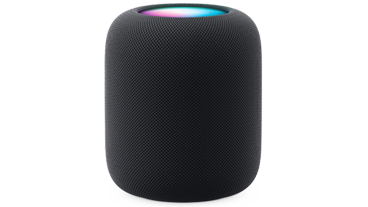
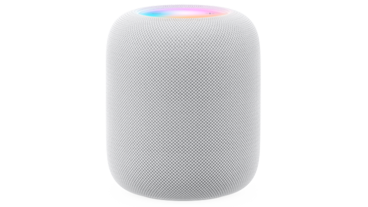
HomePod vs Sonos Era – Speakers and Audio
Apple’s HomePod mini uses a full-range driver and dual passive radiators, despite its small size. The compact arrangement does mean it has to fire the audio through a custom acoustic waveguide, so it can spread the sound in all directions.
The HomePod uses a high-excursion woofer, combined with five horn-loaded tweeters pointed outwards in different directions for its own room-filling sound.
Sonos uses a total of six class-D digital amplifiers in the Era 300, along with four tweeters. Two tweeters are side-firing, along with a front-firing one for a center image, while the fourth is an upward-firing version that aims for the ceiling.
There’s also two woofers included in the Era 300.
The Era 100 opts for three class-D digital amplifiers, controlling two angled tweeters and one midwoofer.
Both Apple and Sonos boast their own technologies to produce a room-filling sound, with the HomePod including room-sensing functionality while both Eras have Sonos’ “TruePlay” system. The HomePod mini doesn’t offer this sort of per-room tuning, if only because of its limited speaker arrangement.
Sonos’ main push into Spatial Audio does match Apple’s own with the HomePod, with Dolby Atmos support present in the Era 300. However, neither the Era 100 nor the HomePod mini support Dolby Atmos.
HomePod vs Sonos Era – Microphones
All of the speakers use a microphone array, which can assist with audio processing as well as to take requests for each system’s respective digital assistants. Apple employs Siri, while Sonos uses Sonos Voice Control and has Amazon’s Alexa built in.
However, while Sonos does say it uses a far-field microphone array with beamforming and multichannel echo cancellation, it doesn’t say how many mics are in each speaker’s array. It does say that the microphones can be toggled off using a dedicated switch for extra privacy.
Apple does say it uses a four-microphone design for its HomePod and HomePod mini, with each capable of far-field audio captures.
HomePod vs Sonos Era – Connectivity
On the networking side, the Sonos pair support Wi-Fi 6 while the HomePods use 802.11n Wi-Fi. Ultimately, given the audio streaming nature of each, this isn’t a massive issue for Apple as all will be more than capable of handling an audio stream.
All speakers support Bluetooth 5.0, though Sonos does pull ahead by including USB-C connectivity for hard wired audio playback from a host device. However, you do need to use the Sonos Line-in Adapter for this to function with 3.5mm plugs.
Apple does include Thread with Matter and Ultra Wideband support, which makes the HomePods highly useful as a smart home hub.
HomePod vs Sonos Era – Functionality
All four employ AirPlay 2 for local network pairing, so that they can all be used together for the same iPhone or Mac audio setup if required. This is handy if you want to mix-and-match your speakers, or have music playing in multiple rooms at the same time.
It is possible to pair the speakers up together to create stereo pairs, on a like-for-like basis.
You could also pair them to be used as part of a home cinema system, such as to accentuate the Apple TV in Apple’s case. On Sonos’ side, you could pair the Eras with a Sonos soundbar, such as the Arc or second-gen Beam if you want Dolby Atmos support for the Era 300 for movies.
A lot of the controls for the HomePods is handled by iOS, macOS, and the Home app, and that is also reflected in the setup process. Due to the deep integration with Apple’s ecosystem, setting up a HomePod or mini is quick and easy.
Sonos instead relies a lot on the Sonos app for further configuration and tweaks, as well as the initial setup. The app can also be used to control sound from any room, to fine tune the audio experience, and for configuring multi-room audio setups.
It’s even possible to use the app to tune speakers to the room using TruePlay, with the app using the microphone in the iPhone or iPad as you walk around the room.
The Sonos app also provides Sonos Radio access, with the Sonos speakers also directly controllable by some music streaming services.
A unique feature of the Sonos speakers versus the HomePods is that Sonos includes privacy functions into its mic array. It does so in two ways.
The first is that you can tap a speech bubble button to disable voice assistant support on the Eras. While this would make Alexa unusable, it will still allow other mic-related features to function, like TruePlay.
A second switch on the back of the speaker is a hardware disconnect, physically disabling the microphones until the switch is flipped a second time. This is a more secure way of knowing digital assistants aren’t listening in, but it also disables the other mic-dependent features as well.
HomePod vs Sonos Era – Pricing and Options
Apple prices the second-generation HomePod at $299, while the HomePod mini is $99. The HomePod is available in White and Midnight color options, and the HomePod mini is offered in White, Yellow, Orange, Blue, and Space Gray. The latest discounts can be found in our Smart Speaker Price Guide.
Sonos sells the Era 100 for $249, while the Era 300 is $449. Color options are Black and White only.
HomePod vs Sonos Era – Which to buy?
Sonos is known for high audio quality, but its also an Apple rival when it comes to smart speakers. With the Era 300, it’s attempting to step up to Apple in terms of technology, with its major push into Spatial Audio.
It is still too early to tell if Spatial Audio is a big enough feature for the speaker-buying public to really care, but audio quality will certainly be a big factor for some.
In both camps, there’s a larger speaker and a smaller version, with the bigger edition offering a few more features and more hardware to drive the sound than the more compact alternatives.
However, a big element here is pricing, and that can be an issue when you consider Sonos’ premium offerings are considerably more expensive than Apple’s.
That you can pick up a full-size HomePod for about $50 more than the Era 100 is a little bit extreme. Meanwhile, the Era 300 is $150 more than the HomePod, or $51 more than a HomePod and a HomePod mini combined.
If we’re talking stereo pairing, you could pay $600 for a pair of HomePods, or nigh $900 for two Era 300s, or $500 for the Era 100. But then again, you can pay just $198 for two HomePod minis and get stereo action going.
The extremely great value of the HomePod mini is still underappreciated, especially since you can get two stereo pairs of them and a spare for the cost of an Era 100 stereo pair. For the cost of an Era 300 pair, you could put HomePod mini stereo pairs into most rooms of a house.
And that’s before we get to the smart home elements. Sure, Sonos has the Alexa connection, but Apple’s HomeKit hub functionality in the HomePods, as well as the temperature and humidity sensors, and thread support makes them more viable for use in smart homes.
What Sonos has come up with is a new generation of smart speaker that plays up the Spatial Audio card for its most expensive offering.
Sonos is certainly the premium option, but whether you want to pay for that when you can get a pretty good experience from the HomePod and HomePod mini for less money is another matter entirely.
Where to Buy?
Apple’s HomePod and HomePod mini can be purchased from a variety of retailers. The 2023 HomePod is currently on sale for $285 with promo code APINSIDER at Apple Authorized Reseller Adorama. The HomePod mini, meanwhile, is on sale for $94.99 at B&H at press time.
The Sonos Era 300 can be purchased at Sonos.com for $449. The Sonos Era 100 is $249 at Sonos.


